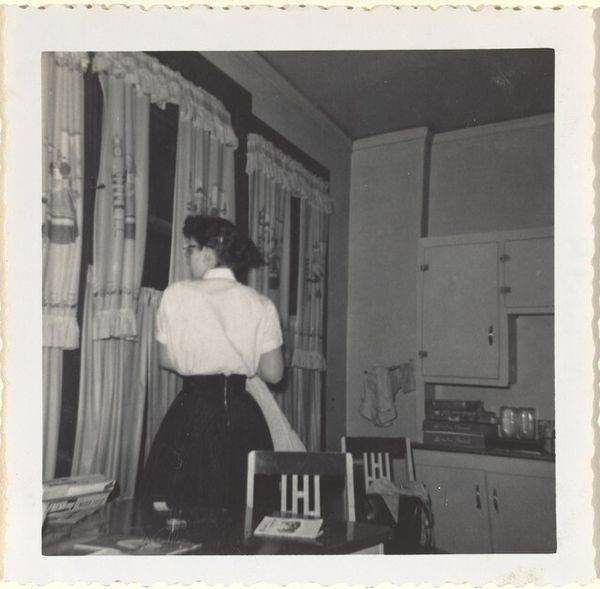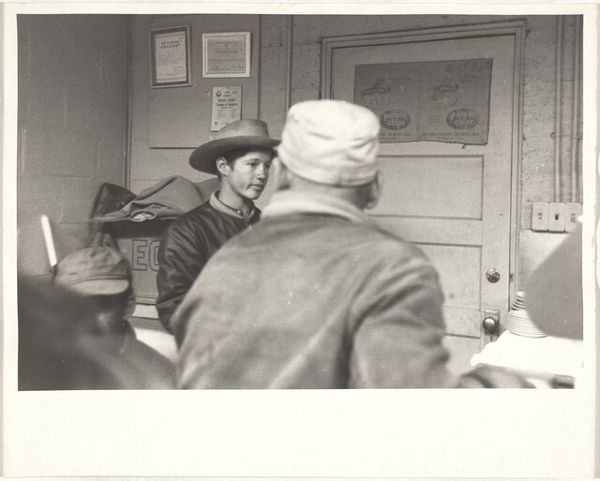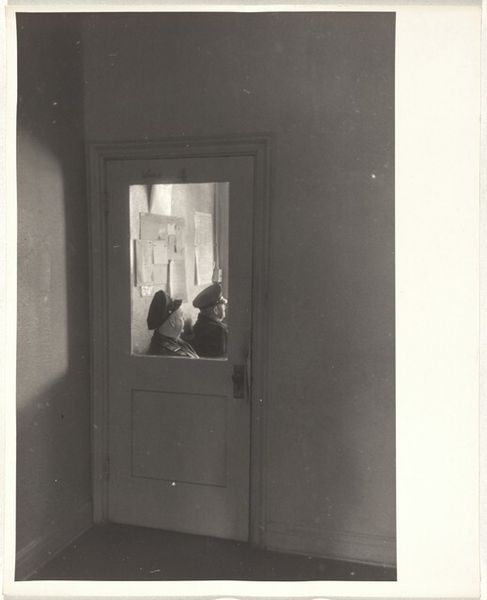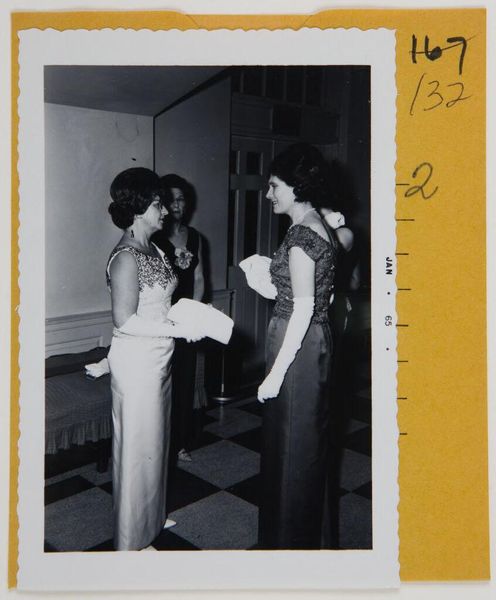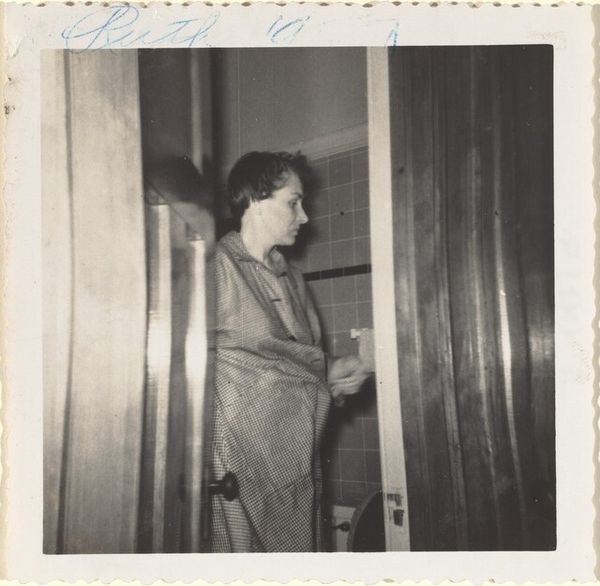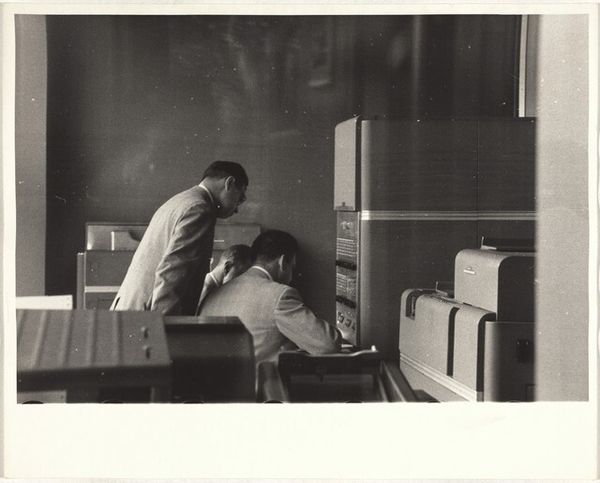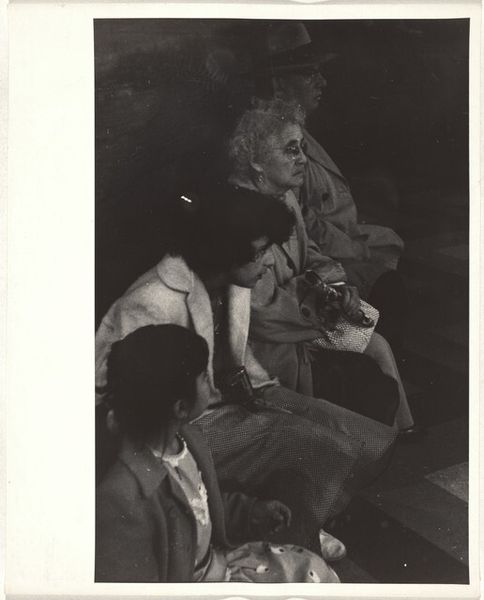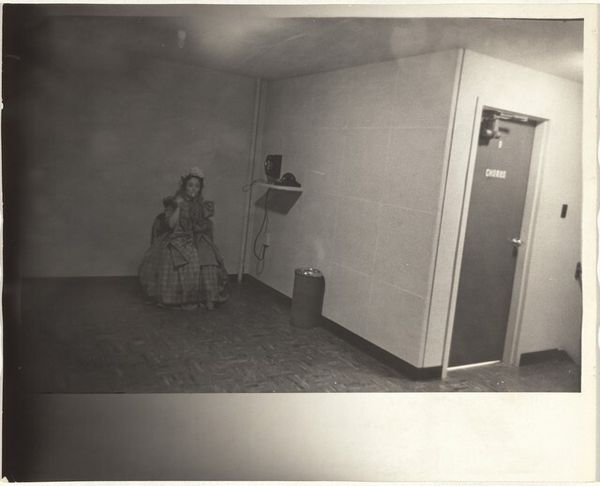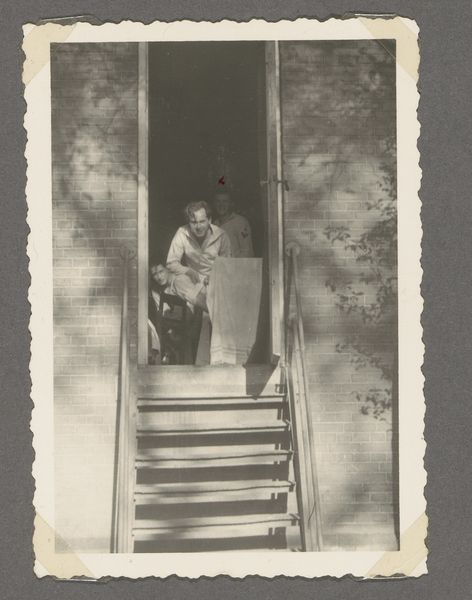
print, photography, gelatin-silver-print
#
portrait
#
print photography
# print
#
street-photography
#
photography
#
gelatin-silver-print
#
genre-painting
#
modernism
#
realism
Dimensions: sheet: 25.2 x 20.3 cm (9 15/16 x 8 in.)
Copyright: National Gallery of Art: CC0 1.0
Editor: Robert Frank's "Couple in Restaurant - New Mexico," a gelatin silver print from 1955, captures such a poignant scene. The shadow of what seems to be the photographer almost obstructs a couple embracing, while another man looks on with this…melancholy gaze. What speaks to you most in this work? Curator: I'm immediately drawn to the materials themselves and the process Frank employed. The grainy texture of the gelatin silver print is crucial, isn't it? It speaks to the immediacy and rawness he was after, a departure from the polished surfaces often seen in photography of the time. This texture wasn't accidental; it reflects specific choices in film, development, and printing techniques that aligned with his broader social commentary. Editor: Social commentary? In a picture of a couple? Curator: Absolutely! Think about the setting. This isn't a staged studio shot; it’s a roadside restaurant, likely a transient space reflecting post-war American mobility. The materiality of the scene – the cheap Formica countertops, the worn clothing, even the bottles of beer – these are signifiers of a specific social strata, the working class. Frank used his camera almost like an anthropologist, examining the rituals and realities of everyday life. Editor: So the act of photographing and printing becomes a sort of documentation? Curator: Precisely! And let's not forget the element of labor. The act of creating a photograph in 1955 was far more involved than today's digital snapshots. Frank's labor, from driving across the country to meticulously developing and printing these images, imbues the final print with meaning. Each step informs the material, making the image itself a product of social forces and individual choices. Does seeing it this way change your perception? Editor: Definitely! I hadn't considered the materials themselves as being so intrinsically linked to the social message, it adds layers. Curator: Seeing art through a materialist lens makes us question the very value we place on "art," challenging traditional hierarchies between artist, craftsperson, and subject. It also connects consumption to image-making in unexpected ways.
Comments
No comments
Be the first to comment and join the conversation on the ultimate creative platform.
